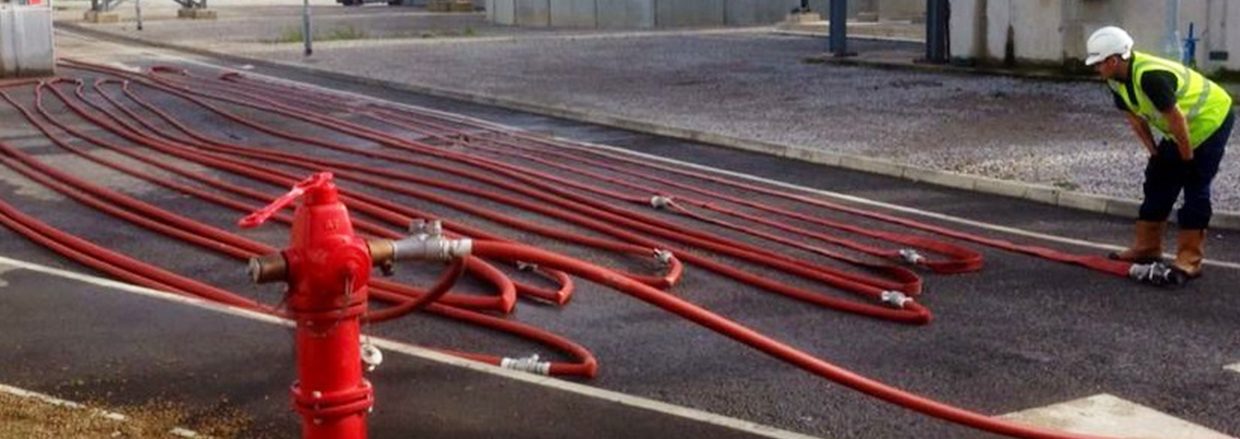
Dry Riser Testing and private hydrant testing
Dry Risers
The Regulatory Reform (Fire Safety) Order 2005 requires suitable provision of firefighting equipment to be made available and routinely serviced and maintained.
Dry riser systems are prone to corrosion, neglect and vandalism and so must undergo regular routine inspection and maintenance to ensure their continued effective use as and when required. Celtic Fire Security offer a full wet pressure test and repair service to the latest British Standard BS9990.
The Wet Test
Each system is checked thoroughly for wear, damage and corrosion before being filled to capacity with water. The system is pressurised to 4 bar and a visual inspection is made of all pipework and mechanical components for signs of water and pressure loss. Once satisfied that system is safe, the pressure is increased to 12bar and is once again thoroughly checked and is left under pressure for 15 minutes. The system is fully drained and signed off with maintenance label in the inlet cabinet followed by a condition report and / or a certificate of inspection.
The Dry Test
At least 6 months on from the wet test there is a requirement under British Standard BS9990 to complete a dry, mechanical / visual inspection to all moving components including inlet cabinet, inlet breech, landing valves (including washers), air release valve and lubricate as required.
All tasks are performed by our own, trained in-house team and we do not subcontract. Replacement parts are carried on the riser vehicles to ensure we can rectify defects at the time of the test so as to prevent the system being left out of order.
Private Hydrant Testing
 Owners and managers of private land and property containing underground fire mains are responsible for ensuring their safe working condition for use by fire fighters.
Owners and managers of private land and property containing underground fire mains are responsible for ensuring their safe working condition for use by fire fighters.
Under ground, private fire hydrants must be indicated by a sign to identify its location and should contain information including, fire main size and distance to the hydrant from the sign. Hydrant covers are usually painted yellow to further facilitate their location. The inspection and test comprises many checks including but not limited to condition of cover, pit condition, pit draining capability water static pressure and a water flow rate test (if practicable due to the risk of disturbing silt and contaminating local water supply).
Once complete, a condition report and / or certificate of inspection is issued.
